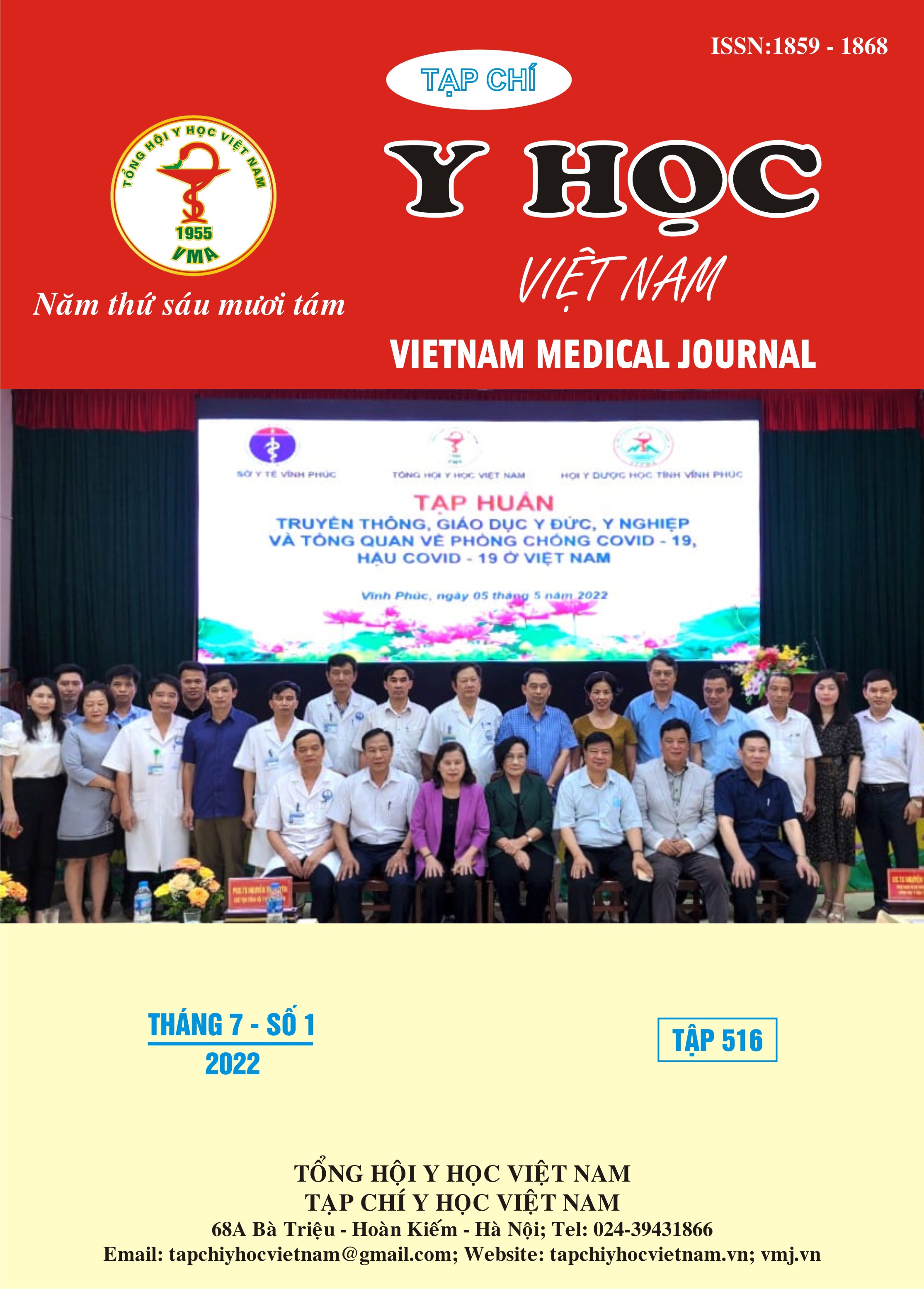ASSESSING THE SKILLS OF USE OF DRUG DISPOSAL EQUIPMENT OF COPD PATIENTS AT NAM DINH PROVIN HOSPITAL
Main Article Content
Abstract
Objectives of the study: Assessing the skill of using drug dispensing equipment of COPD patients at Nam Dinh Provincial General Hospital. Subjects: 82 patients diagnosed with COPD exacerbation were stabilized at the general internal medicine department, Nam Dinh General Hospital in 2021. Research method: prospective description. Results: mean age 72 ± 10,672, male/female approximately 3.3/1; the highest percentage of GOLD D patients was 45.1%. Skill in using metered-dose inhalers: 73.2% did not manipulate the full exhalation step; wrong step in hand-pressing-mouth-breathing and inhaling slowly and deeply (75.6%); the step of holding your breath for 10s after spraying is wrong (42.7%). Skill in using a dry powder inhaler: 53.7% did not perform the full exhalation step; hold your breath for 10s, then exhale slowly wrongly (46.3%). Conclusion: There are many errors in the practice of using drug delivery devices by patients with COPD, mainly in the steps of exhaling as hard as possible before inhaling the drug or holding the breath for 10 seconds and then slowly exhaling, coordinated hand-to-mouth movements. Inhalation reduces the effectiveness of treatment.
Article Details
Keywords
chronic obstructive pulmonary disease, drug delivery device
References
2. Thomas L Petty. (2006). International journal of chronic obstructive pulmonary disease, The history of COPD 1(1), tr. 3.
3. Đinh Ngọc Sỹ. (2011). Dịch tễ bệnh phổi tắc nghẽn tại Việt Nam. Hội thảo khoa học hen- COPD toàn quốc Cần Thơ.
4. Lundbäck B, Gulsvik A, Albers M et al (2003). Epidemiological aspects and early detection of chronic obstructive airway diseases in the elderly. European Respiratory Journal, 21 (40), 3-9.
5. Trần Thu Hiền (2017). Nhận xét kết quả giáo dục sức khỏe về tuân thủ điều trị của người mắc bệnh phổi tắc nghẽn mạn tính điều trị ngoại trú tại bệnh viện đa khoa tỉnh Nam Định, Luận văn thạc sĩ Điều dưỡng, Trường Đại học Điều dưỡng Nam Định.
6. Nguyễn Xuân Tĩnh (2019). Chất lượng cuộc sống và một số yếu tố liên quan ở người mắc bệnh phổi tắc nghẽn mạn tính điều trị tại bệnh viện đa khoa tỉnh Nam Định năm 2019. Luận văn thạc sĩ điều dưỡng, Trường Đại học Điều dưỡng Nam Định.
7. Nguyễn Thanh Hiếu (2018). Nghiên cứu đặc điẻm lâm sàng, cận lâm sàng và một số yếu tố liên quan đến diễn biến đợt cấp bệnh phổi tắc nghẽn mạn tính, Luận văn Trường Đại học Y Hà Nội, Hà Nội.
8. Nguyễn Mạnh Thắng (2019). Nghiên cứu đặc điểm lâm sàng, cận lâm sàng và căn nguyên vi sinh trong đợt cấp bệnh phổi tắc nghẽn mạn tính tại Trung tâm Hô hấp bệnh viện Bạch Mai, Luận văn thạc sĩ ,Trường Đại học Y Hà Nội.
9. Stang P, Lydick E. (2000). Using smoking rates to estimate disease frequency in the general population. Chest. 117. pp 354-359.
10. Nguyễn Thị Phương Thảo (2018). Nghiên cứu áp dụng phân loại mức độ nặng bệnh phổi tắc nghẽn mạn tính theo GOLD 2017 tại phòng khám quản lý bệnh phổi tắc nghẽn bệnh viện Bạch Mai, Luận văn thạc sĩ Nội khoa, Trường Đại học Y Hà Nội, Hà Nội.


